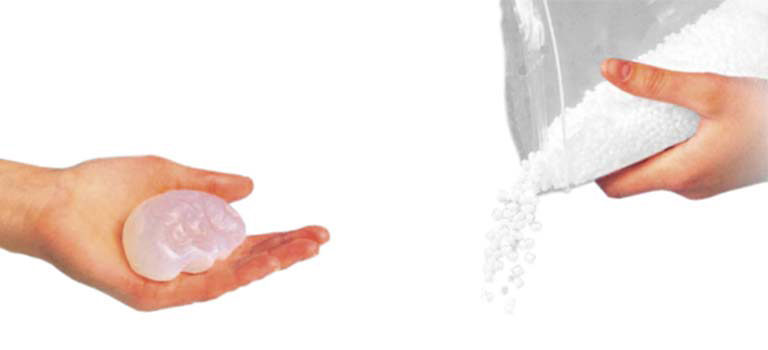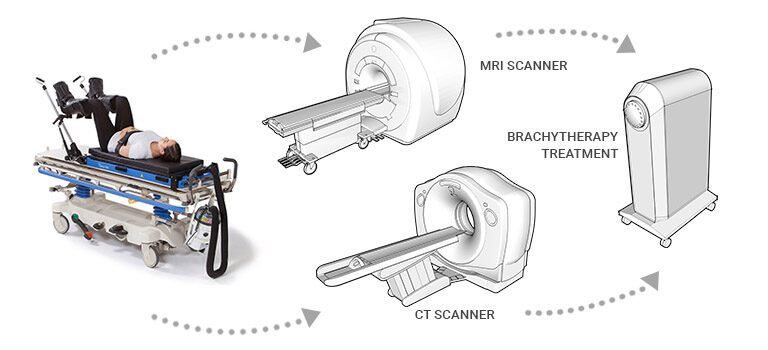
Why Radiation Therapy: An Introduction
Radiotherapy as a valuable part of qualitative cancer care
Radiation therapy is increasingly used as a cancer treatment and is continuously developing on a technological level, but not everyone may know what this therapy entails. Based on articles by ESTRO and BRAVO, two advocates for creating awareness about radiation therapy, we explain why the treatment plays such an important role in cancer care.
With this introduction to radiation therapy, we want to give those who wish to learn more about this treatment an idea of its importance in today’s cancer care.
![]()
The study and practice of radiation therapy date back to as early as 1895, soon after x-rays were discovered. At that time, the treatment was highly experimental, but over the course of more than a hundred years of research, radiotherapy has known major technological advances.
Nowadays, radiotherapy is a safe and highly effective cancer treatment that precisely targets and destroys tumour cells by delivering a powerful radiation dose, while sparing the surrounding healthy tissue.
In this article, we discuss why radiation therapy deserves more recognition and why it is a valuable part of qualitative cancer treatment.
1. There is an increasing need for effective cancer treatment
Across the world, more and more people are diagnosed with cancer, which results in an increasing demand for effective cancer treatment. In 2018, there were an estimated 4.23 million new cases of cancer in Europe alone, and specialists predict that this number will rise to 5.2 million by 2040.
Radiotherapy could be a vital part of treatment for more than 50% of cancer patients. However, only one in four people receive it or have access to it. Radiotherapy is still often forgotten as a potential cancer treatment, although it could offer a solution for the increasing need for qualitative cancer care.
2. Radiotherapy is technically evolving on a rapid scale
Radiotherapy relies on the use of highly advanced and automated computerised systems. Over the past few decades, technological advances and clinical research have entirely re-shaped the way radiotherapy is delivered, which has significantly reduced the treatment’s impact on patients’ lives:
- Reduced side effects: Thanks to the precise shape and careful delivery of radiation beams, tumours can be controlled and treated more effectively, with limited damage to surrounding healthy tissue. This results in a reduction of side-effects.
- Shorter treatment: Over the past two decades the number of fractions has reduced for breast and prostate cancer because radiotherapy can now be delivered in fewer fractions and slightly larger doses over a shorter period of time (hypofractionation).
- Effective treatment for more patients: Many cancers can now be treated with radiotherapy as an effective alternative to surgery or chemotherapy.
Depending on the cancer type, a treatment plan that utilises different radiotherapy machines and techniques is drawn up for each patient:
- Linear accelerator: One of the most commonly used devices is the linear accelerator, which accelerates charged particles to produce high-energy X-rays. This beam can be altered to match the shape of the tumour so that only the malign tissue is targeted. The gantry, that delivers the beam, can be rotated around the patient. In combination with the moveable treatment couch, the tumour can be targeted from any angle.
- IMRT: Intensity-modulated radiation therapy is an advanced technology that can precisely match the shape of the tumour. In this case, the aperture of a collimator is matched to the shape of the tumour to spare healthy tissue.
- IGRT: Image-Guided radiotherapy is a technique where the treatment is combined with imaging before and sometimes during treatment. With this technique, the position of the patient can be corrected and the treatment is optimised for the best possible treatment.
- Proton therapy: Very precise proton beams are delivered to the tumour with a cyclotron or synchrotron. The Bragg Peak, the point where the proton beam releases most of its energy, can be located very precisely so it only affects the tumour. Beyond this point, the protons stop emitting energy, thus keeping damage to healthy tissue to an absolute limit.
3. Radiotherapy is precise
Many steps are taken to make radiotherapy as precise and exact as possible, to limit damage to healthy organs and tissue:
- As discussed above, advanced technologies can now precisely match the shape of the tumour, only targeting the affected area.
- Patients are immobilised in the exact same position for each session.
- Current technologies allow making images during the treatment that detect patient movement.
4. Radiotherapy is a safe treatment
Radiotherapy is a tailored and individualised treatment for each patient.
The tumour is targeted with the lowest effective dose, which minimises the radiation effect on surrounding tissue.
The medical and physics team follow multiple safety and quality guidelines to ensure that the treatment is as effective and safe as possible.
Radiation oncology uses advanced imaging to check if the patient is correctly positioned on the treatment table and the therapists carefully check that the required dose is delivered in the exact area where needed.
5. Radiotherapy can be combined with other treatments
Radiotherapy can be given on its own, but also in combination with other treatments, such as surgery, chemotherapy, hormonal therapy or immunotherapy. For instance, radiation can be given before surgery to decrease the size of the tumour and/or after surgery to eradicate outgrowth of cancer cells that may have stayed in the body.
Many treatment combinations are possible in this multimodal approach and every component takes on its special role to eliminate the tumour and limit its recurrence. This ensures that each patient receives the most effective treatment for their specific type of cancer.
References:
![]()
Contact us for more product information or find your local distributor here.
![]()
If you’d like to receive the latest product updates and interesting Orfit news, subscribe to our newsletter:



